HPE Aruba Instant On 1960 48G 2XGT 2SFP+ Switch Management
Something that we are not going to focus on in this review, but it is important, is that HPE Aruba has its Instant On cloud management service. One can connect these switches to a free cloud account and manage them remotely. This is great as one does not have to pay additional licensing for features, nor for cloud management.
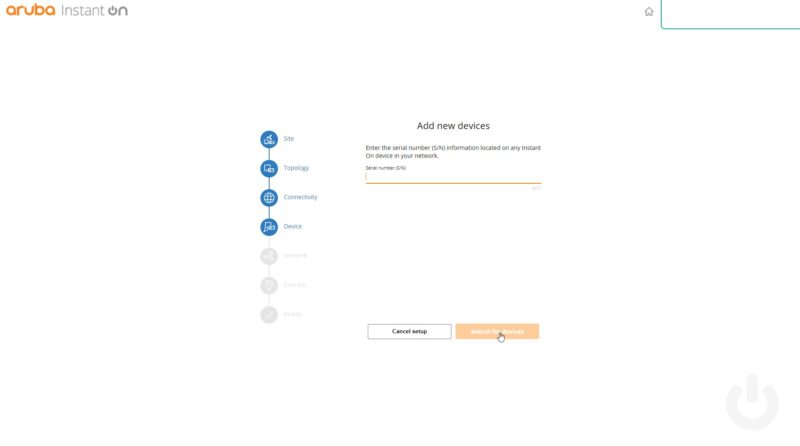
On the switch itself, Aruba uses 192.168.1.1 without a gateway and DHCP. So you will have to connect to the switch before connecting it to the cloud. We wish Aruba at least used a different IP just to avoid conflict with a common SMB gateway IP. Once you login (default is admin and no password, but you are prompted to change immediately), you are greeted with a nice modern dashboard.
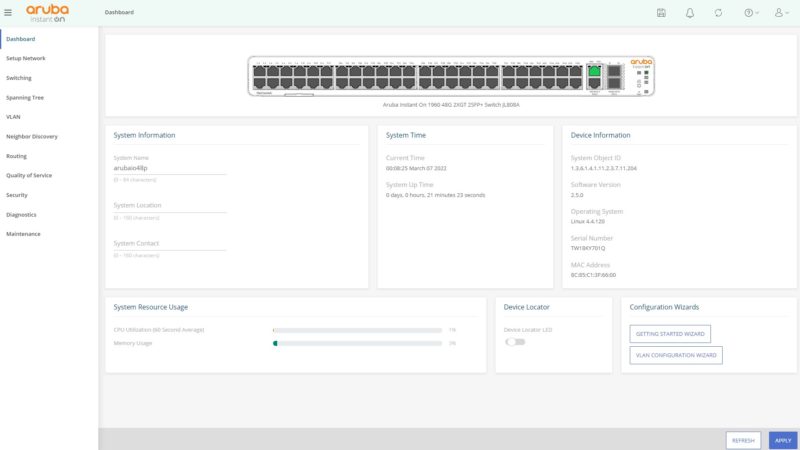
You may see 48-port and 24-port switches in this section, we did them side-by-side and you can see several minutes of screen capture in the video linked on the first page of this review. The Web UI was very responsive and easy for a novice SMB admin to navigate. Since that is the target market, we cannot assume all users will be savvy with 1980s designed switch CLIs, especially as we are entering an era where many of the new SMB admins will be children of the 2000s. Apologies for making most of our reader base feel old.
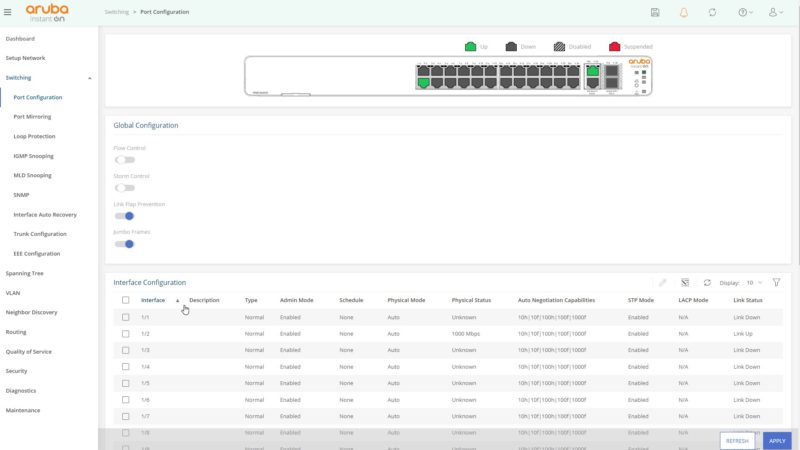
This is a L2+ switch so there is some routing capability, but it will not take the place of dedicated devices in most cases. Still, there is come capability.
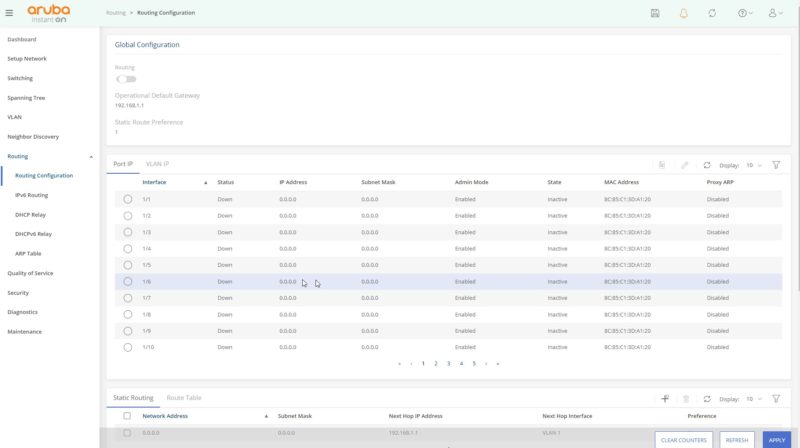
One can also set up features functionality like setting up port access controls.
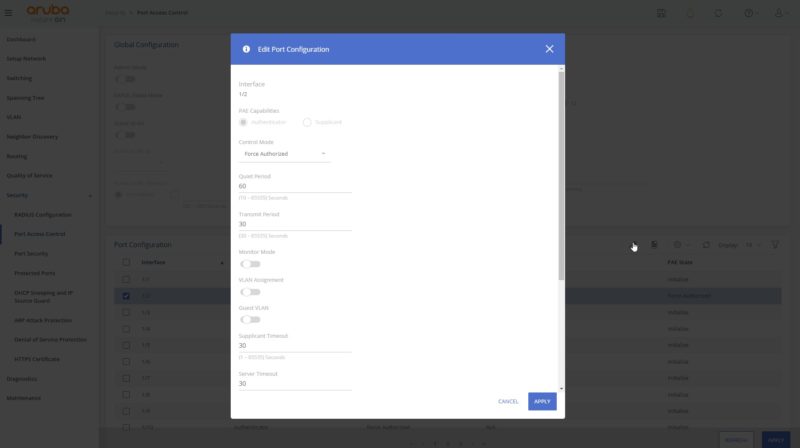
One can also add standard ACLs as well via the GUI.
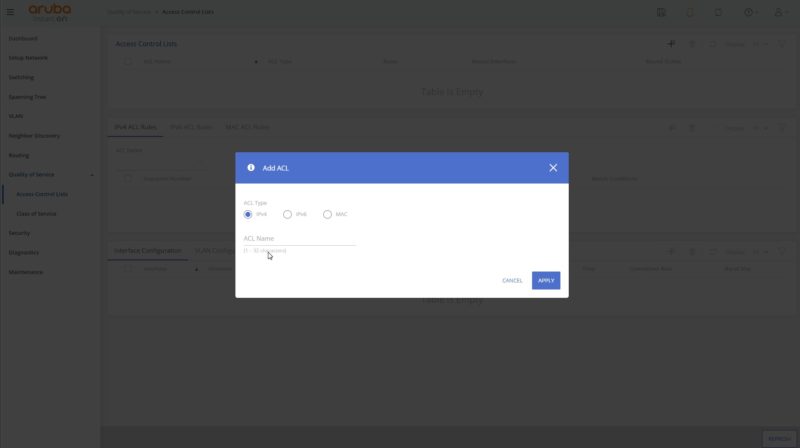
Of course, one can set up VLANs with a very simple interface.
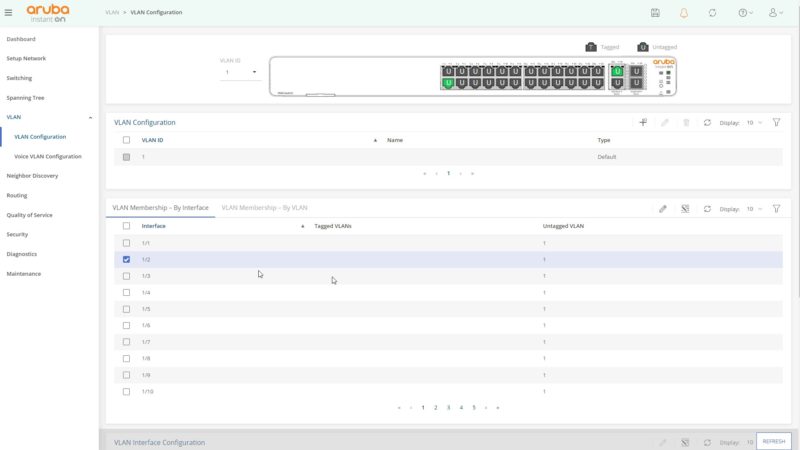
There are even features like DoS protection in this switch.
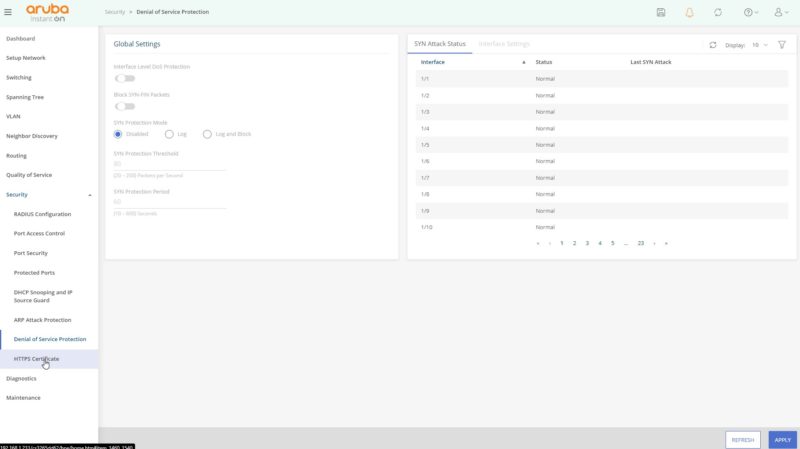
One feature that we were able to try was stacking. We were able to stack up to two switches, but allegedly the line can go up to four. Since we only had the 24-port and 48-port models we could stack those, but that meant we only tested up to a 2-unit stack.
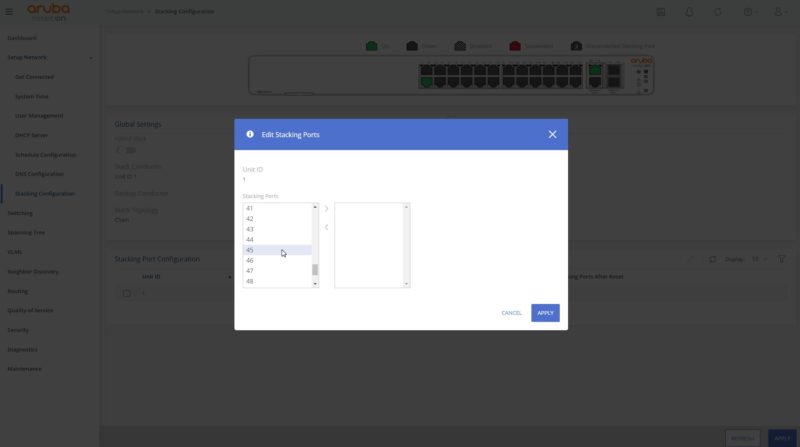
Again, if you want to see more, check out the video. Aruba did a great job on the GUI and the responsiveness is much better than some of the other SMB switches we review.
Next, let us get to power consumption, pricing, market analysis, and our final words.




Sigh, I was all ready to learn about how fast these would start forwarding packets after a cold power up, but alas their ‘instant on’ is just marketing. Managed switches and routers have always suffered horrible boot times measuring into the minutes realm. We should all be holding these companies feet to the fire to makes their devices boot faster than the servers connected to them.
Don’t switches stay on 99.9% of the time?
Does the use of the vent in the 24-port model mean that it can only be racked at the top of the stack?
Obviously 24-port switches aren’t the first choice in situations where you’ll be cramming them in for port density; but given the tendency of demand for ports to creep up over time and the often-cramped ersatz wiring closets commonly populated by switches deliberately priced lower than the fancy enterprise options having to remember that a specific switch has to either go on top or have 1U or more of blank space included will probably bite a few people if that is in fact required.
Fanless is certainly appreciated for deskside use; but a top vent looks awfully like a violation of the tacit assumption that rackmount gear may make demands in terms of how cold the cold aisle is; and how much unimpeded flow-through they’ll be allowed; but aren’t really supposed to have binding opinions about what is above or below them. It’s a pity that they couldn’t have made it work with some combination of front, rear, and side vents.
@eug – In theory, yes they stay on all the time; that’s been my experience until they break. In practice there should be scheduled downtime (and we all do that, right?) to perform code upgrades that avoids or minimizes impact to users.
I am starting to question the rationality of Rohit’s reviews… or the quality of editorial and grammatical review at STH.
Saying the switch has an IP address and it uses DHCP in the same sentence shows a lack of understanding in those technologies, or a rush to get a review out the door. And I doubt that anyone installing this switch, after dropping a few C-notes for it, is a complete n00b that would nuke their own network; the threat implied by using an IP address that duplicates many SMB routers.
I suspect this switch actually attempts to use DHCP first. If DHCP fails to obtain a lease, then it defaults to it’s assigned IP address rather than resorting to APIPA addressing. And that assigned IP address of 192.168.1.1 IS a POOR CHOICE. Patrick, I’ll take a few $$ to rewrite a properly worded review for this product, thank you.
This review makes me wonder if Rohit ever found the loose screw between the keyboard and his chair. /facepalm/